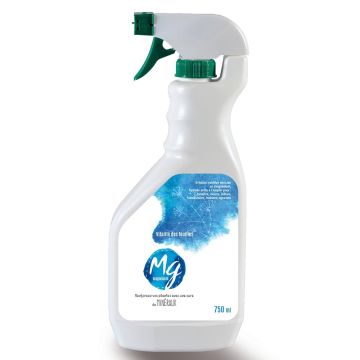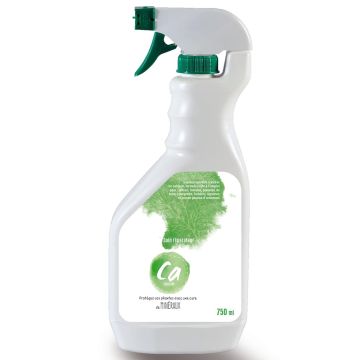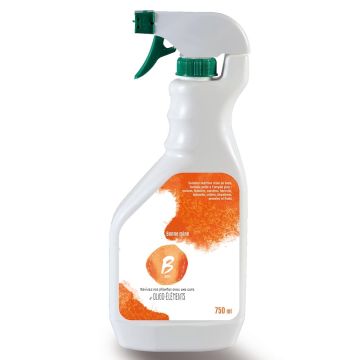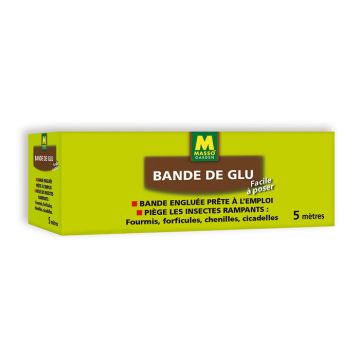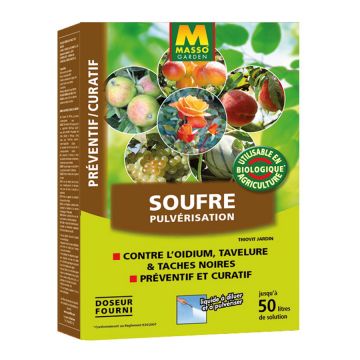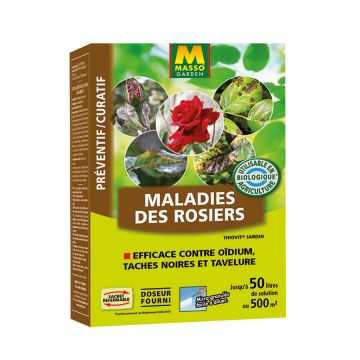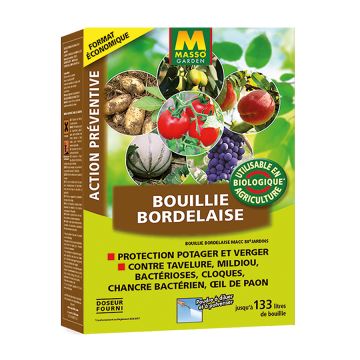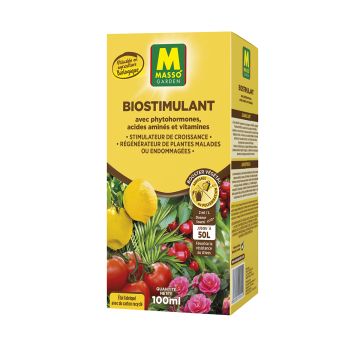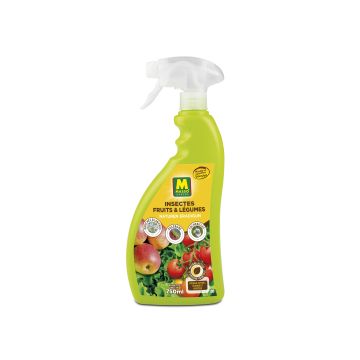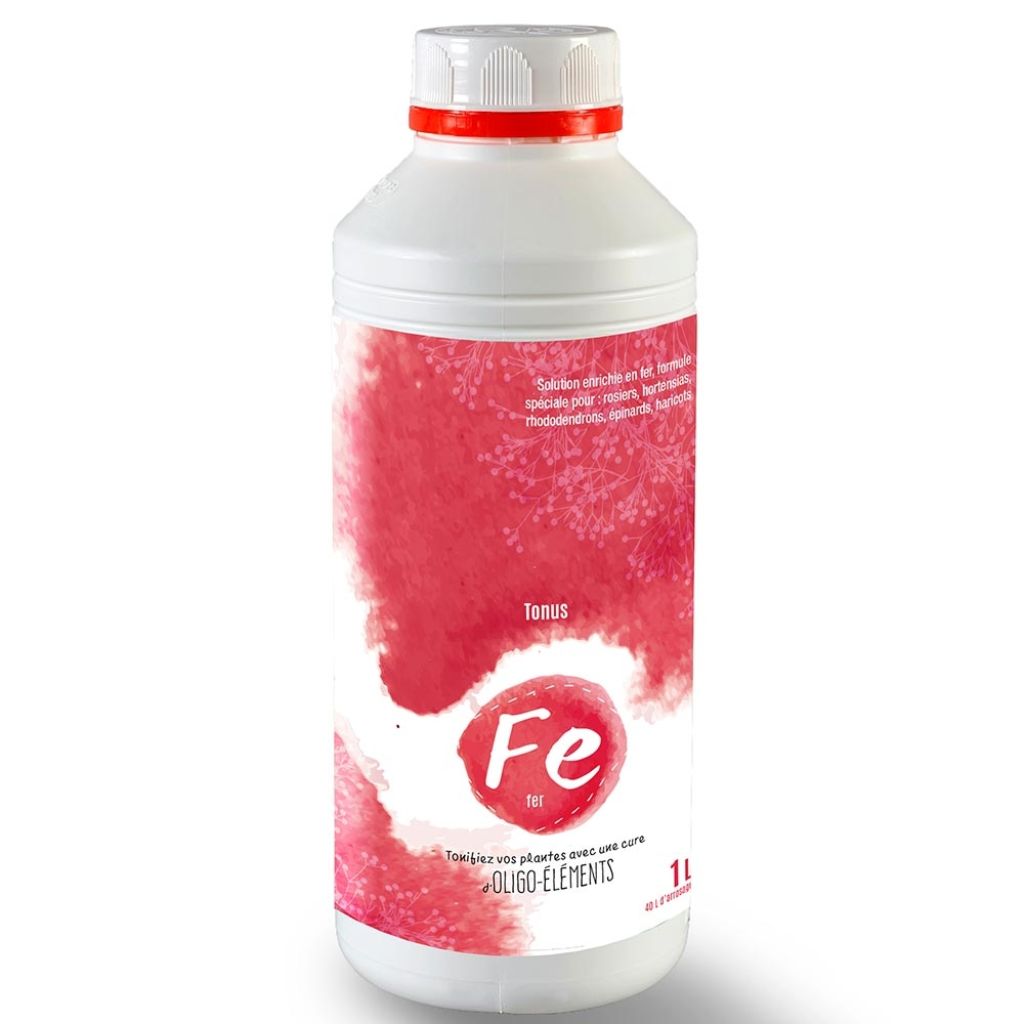

1 litre can of Anti-deficiency Iron (Fe)
1 litre can of Anti-deficiency Iron (Fe)
Great for citrus fruits, my orange tree already feels better with just one dose. Easy to use. The dark red colour is quite amusing to see flowing from the watering can, it gives a little Dracula touch to the plant :-) No bad smells, and no difficulty in using it. Be careful not to leave it in the heat.
Nina, 08/07/2022
Special offer!
Receive a €20 voucher for any order over €90 (excluding delivery costs, credit notes, and plastic-free options)!
1- Add your favorite plants to your cart.
2- Once you have reached €90, confirm your order (you can even choose the delivery date!).
3- As soon as your order is shipped, you will receive an email containing your voucher code, valid for 3 months (90 days).
Your voucher is unique and can only be used once, for any order with a minimum value of €20, excluding delivery costs.
Can be combined with other current offers, non-divisible and non-refundable.
We guarantee the quality of our plants for a full growing cycle, and will replace at our expense any plant that fails to recover under normal climatic and planting conditions.
This anti-deficiency treatment Iron (Fe) is used preventively and curatively to combat iron chlorosis, which manifests as yellowing of the leaves (with the veins remaining green) in plants sensitive to limestone, for example. It contains various trace elements and especially chelated iron, a molecule that allows for iron assimilation even in cases of induced deficiency, and has an effective greening effect. It is diluted in watering water, at the base of crops, Packaged in a 1-litre container, it allows for the preparation of up to 40 litres of solution.
This treatment is in the form of a concentrated solution to be diluted in watering water. It is a rich formulation in Iron (Fe) recommended for alkaline and/or clay soils. Chelated iron, instead of chemically binding like simple iron to calcium or other metals or minerals in the soil, is made available and assimilated by the plant roots: chlorophyll synthesis is restarted, leaves turn green again.
Iron is a crucial element for the health and growth of plants, but its availability largely depends on the soil pH: in alkaline soil (pH>7), iron will be difficult to absorb for certain plants known as acidophilous plants such as rhododendrons, azaleas, hydrangeas, camellias or Kalmia... Iron is involved in the composition of several enzymes and certain pigments. It is essential for chlorophyll formation: iron-deficient plants show symptoms of chlorosis in their leaves, which turn yellow instead of green, except for the veins. Ultimately, chlorosis often leads to the death of plants.
Usage : in ornamental gardens, orchards, vegetable gardens or on the terrace, especially for:
- citrus trees
- all plants known as acid-loving plants (hydrangeas, azaleas, rhododendrons, andromedas, camellias, kalmias, gardenias...)
- certain small fruits (raspberries, blueberries, may berries, vines)
- certain fruit trees
- certain rose cuttings or grafted onto Rosa multiflora
- the lawn
- all plants showing obvious signs of chlorosis in general, including in the vegetable garden (spinach, beans...)
Application from April to September - Dilute the liquid at 5%, i.e. 0.25L of anti-deficiency treatment per 10L of water
- Preventive treatment: on vegetable crops, apply before planting; on annual crops, apply before the start of vegetation in spring. Spread the treatment in the root zone, then water abundantly immediately after application to promote solution penetration at the root level. Treat every 3 weeks.
- Curative treatment : apply at the first signs of leaf yellowing, once a week.
Technical features

Detailed features
Tips
Tips
Other Disease control
View all →-
, onOrder confirmed
Reply from on Promesse de fleurs
Similar products
Haven't found what you were looking for?
Hardiness is the lowest winter temperature a plant can endure without suffering serious damage or even dying. However, hardiness is affected by location (a sheltered area, such as a patio), protection (winter cover) and soil type (hardiness is improved by well-drained soil).

Photo Sharing Terms & Conditions
In order to encourage gardeners to interact and share their experiences, Promesse de fleurs offers various media enabling content to be uploaded onto its Site - in particular via the ‘Photo sharing’ module.
The User agrees to refrain from:
- Posting any content that is illegal, prejudicial, insulting, racist, inciteful to hatred, revisionist, contrary to public decency, that infringes on privacy or on the privacy rights of third parties, in particular the publicity rights of persons and goods, intellectual property rights, or the right to privacy.
- Submitting content on behalf of a third party;
- Impersonate the identity of a third party and/or publish any personal information about a third party;
In general, the User undertakes to refrain from any unethical behaviour.
All Content (in particular text, comments, files, images, photos, videos, creative works, etc.), which may be subject to property or intellectual property rights, image or other private rights, shall remain the property of the User, subject to the limited rights granted by the terms of the licence granted by Promesse de fleurs as stated below. Users are at liberty to publish or not to publish such Content on the Site, notably via the ‘Photo Sharing’ facility, and accept that this Content shall be made public and freely accessible, notably on the Internet.
Users further acknowledge, undertake to have ,and guarantee that they hold all necessary rights and permissions to publish such material on the Site, in particular with regard to the legislation in force pertaining to any privacy, property, intellectual property, image, or contractual rights, or rights of any other nature. By publishing such Content on the Site, Users acknowledge accepting full liability as publishers of the Content within the meaning of the law, and grant Promesse de fleurs, free of charge, an inclusive, worldwide licence for the said Content for the entire duration of its publication, including all reproduction, representation, up/downloading, displaying, performing, transmission, and storage rights.
Users also grant permission for their name to be linked to the Content and accept that this link may not always be made available.
By engaging in posting material, Users consent to their Content becoming automatically accessible on the Internet, in particular on other sites and/or blogs and/or web pages of the Promesse de fleurs site, including in particular social pages and the Promesse de fleurs catalogue.
Users may secure the removal of entrusted content free of charge by issuing a simple request via our contact form.
The flowering period indicated on our website applies to countries and regions located in USDA zone 8 (France, the United Kingdom, Ireland, the Netherlands, etc.)
It will vary according to where you live:
- In zones 9 to 10 (Italy, Spain, Greece, etc.), flowering will occur about 2 to 4 weeks earlier.
- In zones 6 to 7 (Germany, Poland, Slovenia, and lower mountainous regions), flowering will be delayed by 2 to 3 weeks.
- In zone 5 (Central Europe, Scandinavia), blooming will be delayed by 3 to 5 weeks.
In temperate climates, pruning of spring-flowering shrubs (forsythia, spireas, etc.) should be done just after flowering.
Pruning of summer-flowering shrubs (Indian Lilac, Perovskia, etc.) can be done in winter or spring.
In cold regions as well as with frost-sensitive plants, avoid pruning too early when severe frosts may still occur.
The planting period indicated on our website applies to countries and regions located in USDA zone 8 (France, United Kingdom, Ireland, Netherlands).
It will vary according to where you live:
- In Mediterranean zones (Marseille, Madrid, Milan, etc.), autumn and winter are the best planting periods.
- In continental zones (Strasbourg, Munich, Vienna, etc.), delay planting by 2 to 3 weeks in spring and bring it forward by 2 to 4 weeks in autumn.
- In mountainous regions (the Alps, Pyrenees, Carpathians, etc.), it is best to plant in late spring (May-June) or late summer (August-September).
The harvesting period indicated on our website applies to countries and regions in USDA zone 8 (France, England, Ireland, the Netherlands).
In colder areas (Scandinavia, Poland, Austria...) fruit and vegetable harvests are likely to be delayed by 3-4 weeks.
In warmer areas (Italy, Spain, Greece, etc.), harvesting will probably take place earlier, depending on weather conditions.
The sowing periods indicated on our website apply to countries and regions within USDA Zone 8 (France, UK, Ireland, Netherlands).
In colder areas (Scandinavia, Poland, Austria...), delay any outdoor sowing by 3-4 weeks, or sow under glass.
In warmer climes (Italy, Spain, Greece, etc.), bring outdoor sowing forward by a few weeks.






























